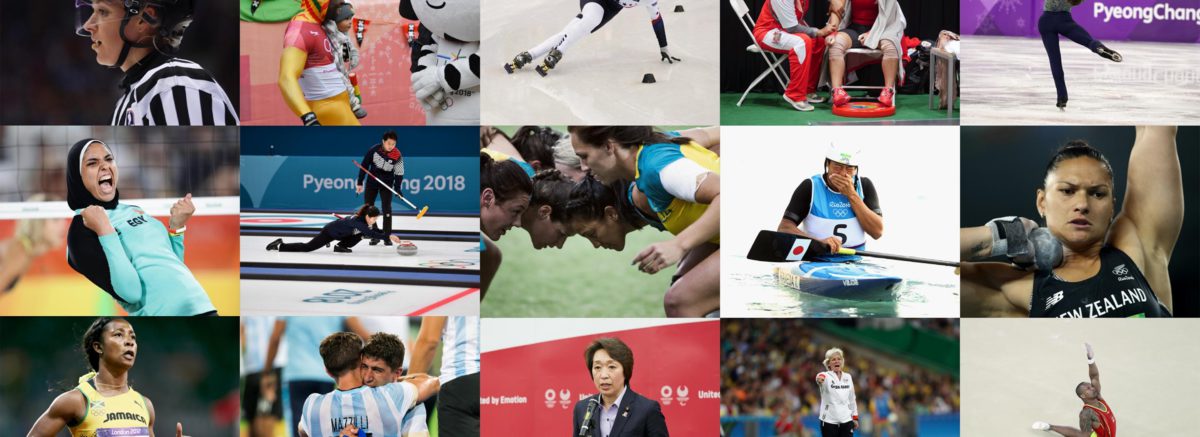Introduction
The Tokyo Olympics was the most gender-balanced game in the history of sports, with more than 49% of women. All the national committees had at least one male and one female representative. That is not just an achievement in empowering women but also a powerful step towards a more inclusive world.
Women have achieved tremendous progress in sports. Not only have they made a place in the sports world but also defied the sexualization of their bodies. However, the sports’ world never had a place for a woman from the beginning. Often we connect sports to masculine nature and therefore shame women who engage in it.
Like every other venture, women broke the stereotypes and rose from the ashes. This was an elaborated fight with a big role of feminism coming in and defending the sisterhood. However, the question here is why was this fight there in the first place? And even if it was who profited from it? We will try to answer these by two frames, first by history and second by the present. Does gender politics influence sports?
Women and sports a historical debate
Women have always been interested in sports. Some stories and plays reflect women in sports written a millennia ago. However, sports meant different things for different genders. For men, it was an elite exercise of competitive values, supported by elaborated rules and respect. On the other hand, for women, it was more of a recreational exercise and with informal rules. There was a dominant belief that the physical and mental labour makes women week. According to scientific research sports draw downs a woman’s reproduction capacity. This ideology made competitive sports a man’s world and something connected to masculinity.
Even if women were allowed in sports, it was primarily a masculine activity. Women could play feminine games like tennis, croquet, archery, and bathing-beauty swimming. Even in these sports, they had to dress up, do not appear competitive and avoid any kind of bruising. This thought of women having a limited amount of physical and mental power weakened a women’s status in the society. Too much study or heaven forbid a competitive and masculine mindset declared a woman unladylike.
In some countries, anti-college movements started claiming that women with a more used up brain could not reproduce. Further colleges providing sports as an activity to its student, were said to have “desexed” their students. President Theodore Roosevelt even said that white families are committing a “race suicide” by sending their daughters to college. In India too, sports was connected to the masculine nature. A women’s life, especially as an upper-caste one must be away from the masses. People considered sports stressful for the body and mind and therefore only expected it from the backward class women.
Have We Moved To A Feminist Approach?
Women competed in the Olympics for the first time in the 1900 games in Paris. However, women only competed in five sports: tennis, sailing, croquet, equestrianism and golf. They were not allowed to compete in others because of its “manly” nature. And now, thirty years fast-forward we had the most gender-balanced Olympic games.
However, some essential problems towards women still lie in these games. One of the most important one being the decision-making power. We as a society continue to marginalize women from decision-making and leadership roles. Structural, Cultural and Wage gaps exist in the lives of women as hurdles towards these leadership roles.
Further we don’t recognize sportswomen as people with other roles like mothers, wives and daughters but just sportspersons. Breastfeeding contestants had to raise their needful voices before receiving an allowance to bring their children. The Olympic committee said that they are happy that so many mothers can participate. However, they refused to see their responsibilities as a mother.
Sexualization of Women is another problem in sports. It’s not just that women are forced to wear certain types of uniforms but, also about the broadcasting of sexual images. These two example and more in sports opened doors for protests from women. For sexualized uniforms, we saw women breaking the rules deliberately to show that their art is in their sports. Further, the protest also leads the committee to change their guidelines to peculiarly respect the bodily integrity of women.
In India particularly, after the winning streak from women, there was an applaud for women in sports. However, we need to consider the lasting effect of the same. A study showed that 42% of Indians felt women’s sports are not as entertaining. Despite women winning medals wrestling and boxing, people still think the sports to be “manly”. On top of all this, casteism is another problem. The issue of casteism affects men too, however, it creates an intersectionality of gender and caste for women.
Conclusion
Women have made tremendous growth when it comes to sports. From protests to writing books to actually participating and winning in various games. We recently witnessed the most gender-balanced Olympics in 2020. Now it’s time to expect the most gender-respected. We saw the whole sisterhood coming together to support each other. American Olympian Allyson Felix stepped up to pay for childcare for female athletes to show her support. On the other hand, singer Pink came up to pay fines for the German gymnastics team wearing full-body unitards. Not to mention the tremendous support from women all over the world. Despite all this, we need women in leadership position, as committee members and coaches. There is a long way to go not only towards the betterment of women but rather a more inclusive world.
About The Author

Aditi Bhardwaj is a Law student. Her interests lie in feminist studies and blogging.
You can read other articles by Aditi here
Image Credit: Olympics.com
